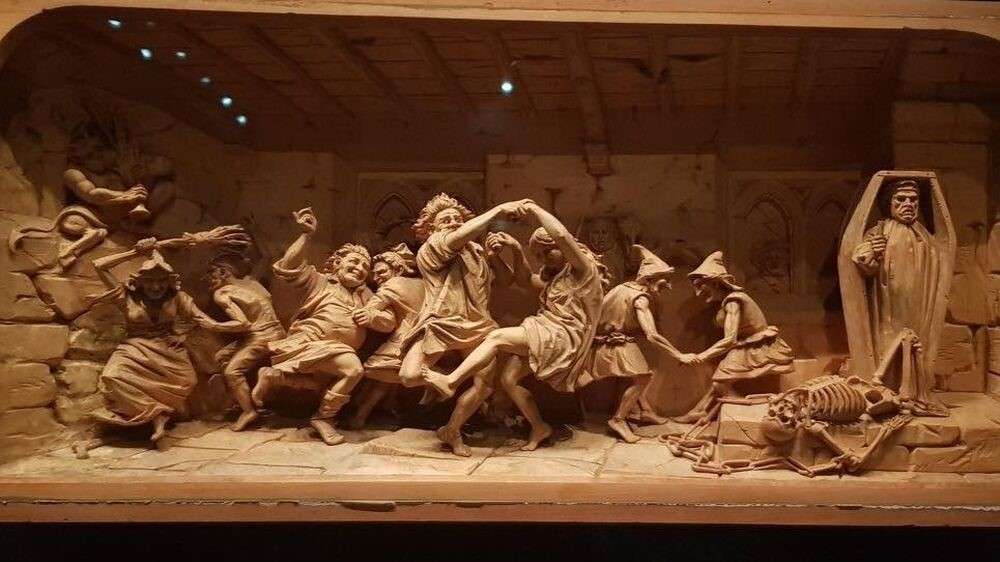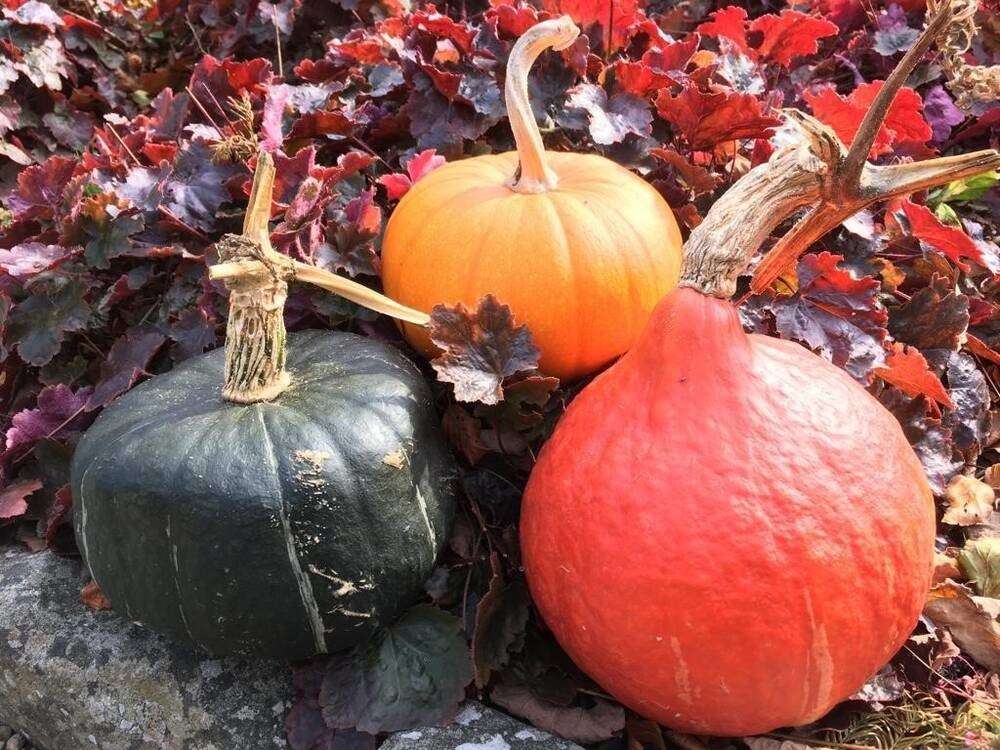
Robert Burns is at his best when dealing with the supernatural folklore of his native 18th century Scotland, and nowhere is this more apparent than in his narrative epic Tam o’ Shanter. The 224-line poem is a reimagining of an old tale from Burns’ youth about what happens to a farmer in the early hours riding past haunted Alloway Kirk. “There’s a beautiful wood carving that Thomas Hall Tweedy made in 1860, called Warlocks and Witches in a Dance, that takes its name from a line in Tam o’ Shanter”, says Lauren McKenzie, Functions and Events Manager at Robert Burns Birthplace Museum. “It’s one of a set of four lime-wood carvings on display at the Robert Burns Birthplace Museum that depicts the central scene in the poem where Tam reaches Kirk Alloway and is stopped in his tracks.” Thomas Hall Tweedy based the piece on a contemporary engraving by artist John Faed. Both artworks capture the humour evident in Tam o’ Shanter, as well as the more gruesome elements of the goings-on in the kirk.
Pumpkins galore
The pumpkins that you will see adorning the battlements of Castle Fraser at this time of year, in the orchard of Leith Hall, or that you’ll find have been made into delicious soup in the cafe at Fyvie Castle, are actually grown on site. “Our properties grow a range of varieties of pumpkins from year to year, from small eating and storing types to large ornamental varieties for pumpkin carving. Some years we have a bumper crop, but every year is different.” says Garden and Designed Landscape Manager Chris Wardle. Some of the varieties grown include Atlantic Giant which is perfect for carving, Summer Sunburst and Patty Pan Green Tint for ornamental use, and Turks Turban and Uchiki Kuri for soups and storing.
Black cat

Black cats have long been associated with Hallowe’en but one dark feline, named Alfonso, was a friendly family pet at Brodie Castle in the early years of the 20th century. A black and white photographic print from the collection at Brodie Castle, dating to around 1909, shows a young David Brodie (aged around four years old) with Alfonso. “The cat would have belonged to David’s mother, Violet May Hope, who was a big animal lover, she had lots of cats throughout her life and was particularly fond of cats and dogs”, says Jamie Barron, Visitor Experience Supervisor at Brodie Castle. “We have copies of the albums that Violet kept of her photographs, of which this is one. The albums are on display for visitors to flick through in the castle. It’s rather sad because within a couple of years of the photograph being taken, David died of diphtheria.” On tours of the castle, visitors are taken into is a bedroom where Violet, who married the 24th laird Ian Brodie, kept a collection of toads. Visitors hear all about Violet and her pets and the walls are adorned with photographs of Brodie pets from over the years.
Ghostly sightings

To protect the original floor tiles in the strongroom at Culross Palace it is cordoned off to visitors, who instead stand behind a rope to see into the place where George Bruce, the richest man in the area, kept his papers and valuables. Dating back to 1597, the narrow room has three-foot thick stone walls and had two heavy iron doors that could be bolted from the inside. It was also designed with a clever slanted entranceway to deter intruders and stop them from pulling out a sword. Not surprisingly it was supposedly cannonball and fire-proof. Visitors might have to stand at the doorway, but that hasn’t stopped some unusual ghostly goings-on being reported in the room over the years. Staff at the property remember a five-year-old girl who went under the rope, stood at the desk and was laughing and joking – with no one. “A guide came in and asked her who she was speaking to. She said, “The man with the hairy face and the funny white thing around his neck.” She was taken to the portrait of George Bruce, and she started waving at him and smiling” says Linda Whiteford, Visitor Services Supervisor at Culross. “One of our guides went into the strong room to set up battery-operated candles, and the quills in a pewter pot on the desk were whirling round and round. She thought it was the draught from her jacket, so went out and came in again. It didn’t make any difference.”
Hebridean Hallowe’en

Through film and photography, the Hallowe’en traditions of South Uist were documented by Margaret Fay Shaw in the 1930s. Contained in the archive at Canna House, Shaw’s images form a rare record of guisers in sheepskin garb with haystack wigs and rope scarves. It wasn’t just at Hallowe’en when islanders believed there were spirits afoot. For hundreds of years a legend swirled around Canna about Coroghon Castle, also known as Coroghon Prison. “A painting of the castle by Richard Doyle featured in the book Canna: The Story of a Hebridean Island by Shaw’s husband, the renowned Gaelic folklorist John Lorne Campbell. Doyle visited Canna in 1875 on the Viscount Sherbrooke’s yacht,” says Fiona Mackenzie, Canna House archivist and manager. “The story goes that Marion Macleod, the wife of Donald Macdonald of Clanranald, known as Dòmhnall Dubh na Cuthaige (Black Donald of the Cuckoo), had an affair. Macdonald was born in about 1625 and fought in Montrose’s army in the Civil War. He married Marion in 1666. When Macdonald found out about the affair, he locked his wife up in in the castle for the rest of her life. Supposedly on a calm moonlit night you can still hear her wailing and crying to be released. Personally, I think that might be the sound of the seals.”
Text and images are courtesy of the National Trust for Scotland. For more information on the Trust or to help them protect Scotland’s heritage see: www.nts.org.uk.

